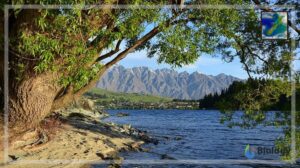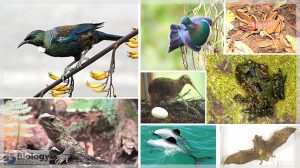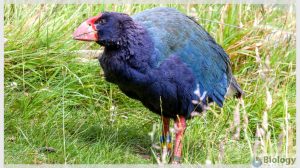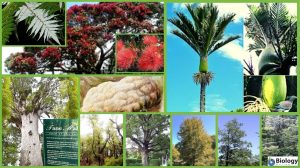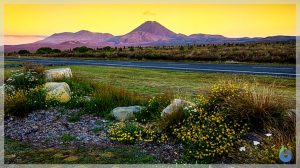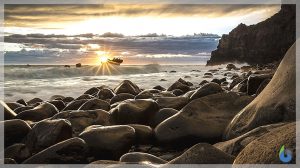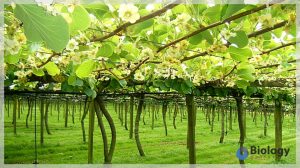Ecology & Biodiversity: New Zealand Flora & Fauna
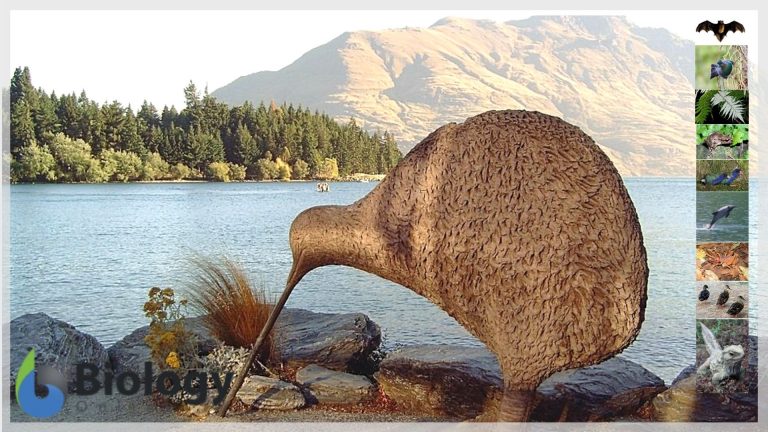
New Zealand Flora & Fauna
New Zealand is known for its unique biodiversity, caused by its remarkable geography and geologic history. Breaking away from the supercontinent Gondwana about 80 million years ago, it has developed a distinct flora and fauna as a result of long geological isolation. Thus, many fascinating plants and animals are found nowhere else but in New Zealand. The number of endemic species (species that are not found anywhere else) is one of the highest in the world, making New Zealand an excellent case study to teach and learn about the fundamentals of Biology.
Objectives
In this tutorial, you will:
- Develop your understanding of biodiversity, ecology, and adaptation using New Zealand as a case study
- Learn how geological processes can influence biodiversity and adaptation
- Meet some of New Zealand’s unique flora (plants) and fauna (animals)
- Learn about the ecological importance of some endemic New Zealand species
- Learn to conduct ecological sampling using quadrats
- Find out why many endemic species are endangered, and explore some innovative conservation efforts
- See the value of drawing on indigenous knowledge systems to achieve ecological outcomes
Key Points
- New Zealand, which is a large island in the south-western Pacific Ocean, used to be part of the supercontinent Gondwana. It separated from Gondwana around 80 million years ago.
- New Zealand has a diverse flora and fauna. The long geologic isolation is a huge factor that led to high endemicity in the country.
- Many of the endemic species of New Zealand descended from the species that originally were from Gondwana. Other native species reached New Zealand by natural means, such as by wind and sea currents.
- New Zealand fauna has since been dominated by birds and insects. Many of the endemic birds evolved to become ground-dwelling, flightless birds. This is probably due to the presence of only a few natural predators.
- New Zealand has very few native land mammals. Bats are the only endemic land mammals found in New Zealand.
- Most mammals that are presently seen in New Zealand are introduced species. They arrived when humans started settling on the islands.
- The first human settlers of New Zealand were the Polynesians. They were ancestors of the Māori. They settled on the islands probably between 1200 and 1300 AD. Europeans gained first sight of New Zealand in 1642.
- Mātauranga Māori (“Māori knowledge”) is Māori world views, language, cultural practices, and principles that originated from the Māori ancestors and then have been passed down across generations.
- The introduction of certain mammals to New Zealand led to a major disturbance in the ecosystem. Some of them competed for resources and even hunted for native birds. As a result, some bird species went extinct while others are now critically endangered.
- Monitoring biodiversity is important to determine the kinds and the number of species present in an ecosystem. Some of the methods commonly used in measuring biodiversity are quadrat and transect sampling, canopy fogging, and netting.
- In New Zealand, biosecurity refers to the preventive measures against the threats of microbial diseases, pests, and weeds to the security of agriculture and environmental communities.
- Biocontrol is one of the strategies used for securing the population of susceptible organisms.
- In New Zealand, the native forests exhibit stratification –from the tall trees in the canopy to the mosses covering the forest floor. The different layers in the forests form distinctive microclimates that lead to the creation of mini-ecosystems, such as the honeydew ecosystem.
New Zealand’s Unique Geographical History
Explore why New Zealand has such unique flora and fauna, and learn why long periods of geographical isolation. This lesson introduces the country’s endemic species, ecology, and geology. Learn why long periods of geographical isolation have led to a large number of endemic species – native species that are not found anywhere else…
New Zealand’s Biodiversity
Find out more about New Zealand’s unique biodiversity by exploring a range of different ecosystems and the key role of some endemic species in these ecosystems…
New Zealand’s Unique Fauna
Meet some of New Zealand’s unique fauna, including endemic insects, frogs, reptiles, birds, and mammals, and investigate why many have such distinctive features. You’ll also find out about why there are so few native mammals and the impact of introduced pests on the unique natural ecosystems…
Takahē (Porphyrio hochstetteri)
Meet the colorful takahē, an extremely rare flightless bird. Find out more about its unique features and why they matter (adaptation). You’ll also learn what a genetic bottleneck is, and how genetic bottlenecks affect conservation…
New Zealand’s Unique Flora
If New Zealand has lots of unique animals, it’s also got a whole lot of unique plants. Find out more about some of them, and the roles they play in different natural ecosystems…
Ecological Research: Measuring & Analysis
This lesson is about the methods used for ecological research, such as quadrat and transect sampling, canopy fogging, and netting in determining biodiversity…
Mātauranga Māori and Science
Mātauranga Māori is the living knowledge system of the indigenous people of New Zealand, including the relationships that Māori have with the environment. This lesson uses the Toheroa Abundance Project as an example of how Mātauranga Māori is influencing ecological outcomes. The lesson is designed to showcase the value of indigenous cultural perspectives and knowledge of the world around us. ..
Biosecurity and Biocontrol
This lesson explores the impact of biosecurity threats, and why they need to be identified and managed. Examples to include are cases of the bacterium PSA causing disease on kiwifruits, myrtle rust, and biological control…
Population Growth and Survivorship
This lesson looks at population attributes, regulation, and growth. It also covers population genetics, particularly genetic variations, natural selection, genetic drift, genetic migration, and speciation…
Community Patterns
Learn about community patterns and the ecological factors influencing these patterns. Revisit some of the ecosystems you’ve learned about earlier to learn more about the possible impacts of natural and human-induced environmental changes…
